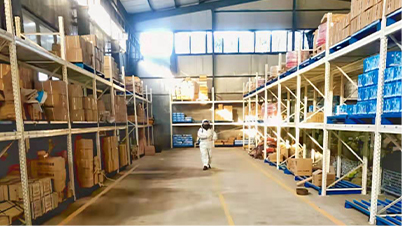Design and Functionality of Gantry Crane Beams in Industrial Applications
Understanding Gantry Crane Beams Essential Components for Heavy Lifting
Gantry cranes are indispensable in various industries, particularly in manufacturing and shipping, where they facilitate the movement of heavy materials. At the heart of a gantry crane is its beam, a crucial component that plays a pivotal role in the crane's operational efficiency and stability.
The beam of a gantry crane is designed to support the weight of heavy loads while maintaining balance. Typically constructed from robust materials such as steel or aluminum, these beams must withstand significant stress and force during lifting operations. The design and engineering of the beam are tailored to the specific operational requirements of the crane. For instance, longer beams may be necessary for wider spans, while shorter beams might be suitable for smaller, confined spaces.
There are several types of gantry crane beams, including box beams and I-beams, each with its distinct advantages. Box beams provide excellent torsional resistance, making them ideal for handling uneven or sudden loads. On the other hand, I-beams are lighter and more cost-effective, which can be beneficial for applications where weight reduction is critical. The choice between these types often depends on the nature of the tasks the crane will perform.
One essential aspect of a gantry crane beam is its capacity. The load capacity depends on various factors, including the beam material, cross-section, and the method of construction. Manufacturers often provide load charts that detail the maximum loads the crane can safely lift at various spans. It is crucial for operators to understand these limits to prevent accidents and ensure safe operation.
gantry crane beam

Another critical consideration is the beam’s mounting and installation. The beams are typically supported by vertical legs, which can be fixed or adjustable, depending on the crane design. Adequate alignment and support are essential during installation to ensure that the crane functions correctly and safely. Misalignment can lead to instability, risking both materials and personnel.
Regular maintenance of the gantry crane beam is also vital. Over time, beams can experience wear and tear due to the stresses of lifting heavy loads. Periodic inspections should be conducted to identify any signs of fatigue, such as cracks or deformations. Addressing these issues promptly can extend the life of the crane and maintain safe lifting practices.
In recent years, advancements in technology have significantly influenced the design and functionality of gantry crane beams. Innovations such as lightweight composite materials and improved design software have allowed manufacturers to create beams that are not only stronger but also more efficient in terms of weight and cost. These developments contribute to the overall effectiveness of gantry cranes in various applications, paving the way for enhanced productivity in industries worldwide.
In summary, gantry crane beams are critical elements that enable efficient heavy lifting in many sectors. With their various types, load capacities, and engineering concerns, understanding the intricacies of these beams is essential for anyone involved in the operation or maintenance of gantry cranes. Proper management and innovative designs ensure that these cranes continue to play a vital role in the modern industrial landscape.
-
YS Permanent Lifting Magnets: The Smarter Way to Handle SteelNewsMay.22,2025
-
PML Magnetic Lifters: Revolutionize Your Steel HandlingNewsMay.22,2025
-
Powerful Magnetic Lifters: The Smart Way to Handle SteelNewsMay.22,2025
-
Heavy-Duty Machine Moving Dollies: Move Anything with EaseNewsMay.22,2025
-
Heavy Machinery Movers: Your Ultimate Equipment Shifting SolutionNewsMay.22,2025
-
Adjustable Gantry Crane: Your Ultimate Lifting SolutionNewsMay.22,2025
-
Safe Lifting in Every Scenario: Redefining Efficiency with the Permanent Magnetic LifterNewsMay.19,2025
